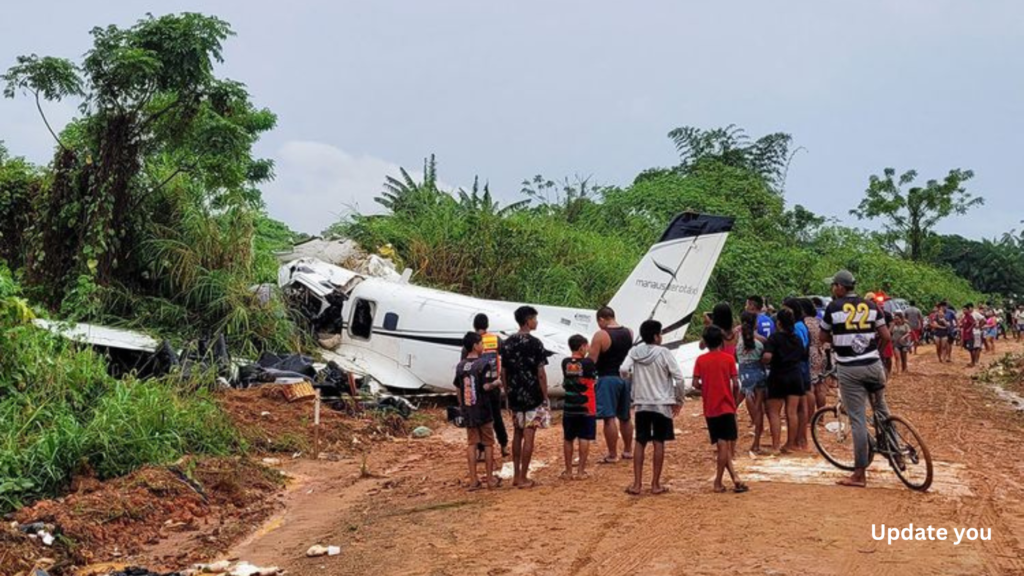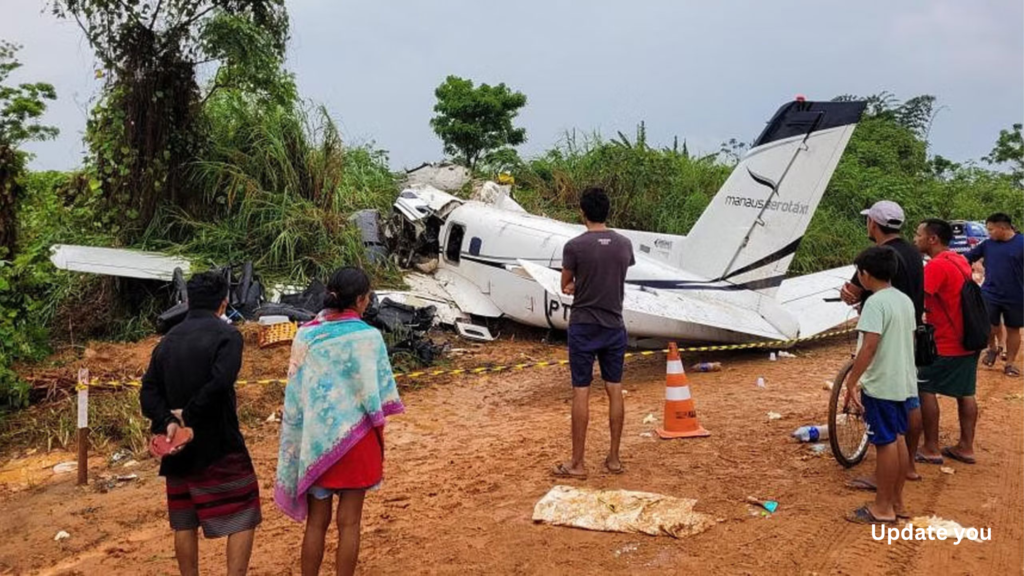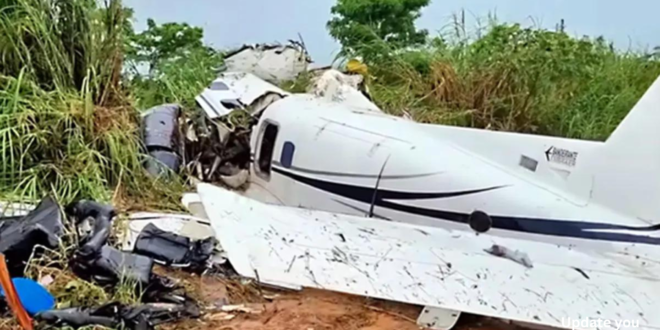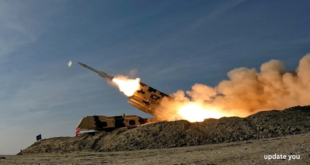The Brazil plane crash news shocked the world as details emerged about the tragic incident. The devastating crash has left many wondering about the safety of air travel in the region and the possible causes behind such a catastrophic event.
Overview of the Brazil Plane Crash Incident
On an unexpectedly tragic day in Sao Paulo, a devastating aviation accident unfolded as a commercial aircraft destined for Rio de Janeiro met with disaster shortly after departure. The plane, filled with 150 souls onboard including passengers and crew, encountered a calamitous fate that resulted in its plunge from the sky, leaving behind a scene of ruin and despair. The crash site, a grim spectacle, bore witness to the aircraft’s disintegration, with fragments of what once was a vessel of travel strewn across a considerable expanse. This occurrence not only shattered the aircraft but also the hearts of many, casting a shadow of mourning over the nation. As the community grappled with the immediate shock and sorrow, the pressing question of what precipitated this horrific event began to surface. While the aftermath was marked by grief and bewilderment, it also sparked a rigorous pursuit for answers, setting the stage for an in-depth investigation. With the integrity of air travel in Brazil under scrutiny, the incident raised alarms about the robustness of aviation safety measures and the imperative need for meticulous examination to ensure the well-being of future air passengers. As the story of this calamity unfolds, the quest for clarity and closure continues, hoping to unravel the sequence of events that led to this heartrending episode.
Eyewitness Accounts and Initial Reports
The immediate aftermath of the Brazil plane crash was characterized by poignant testimonies from those who witnessed the tragedy first-hand. Accounts from locals near the crash site painted a chilling picture of the aircraft’s final moments, with many describing a sudden loss of control leading to its descent. Eyewitnesses recounted hearing the piercing sound of the plane as it plummeted, followed by a deafening explosion upon impact. The smoke and fire that ensued marked a solemn beacon for emergency services rushing to the scene.
Initial investigations hinted at potential mechanical failures, yet the exact causes remain under meticulous scrutiny. Reports from the aviation authority and first responders provided a preliminary understanding of the magnitude of the catastrophe, laying the groundwork for a comprehensive examination. As the community reels from the shock, the narratives of those who bore witness to the crash are invaluable in piecing together the timeline of events. Their observations serve not only as critical inputs for investigators but also as somber reminders of the unpredictable nature of air travel. Engaging with these accounts, authorities are urged to fast-track their efforts in unraveling the specifics of the incident, emphasizing the importance of transparent communication with the public during this critical period of inquiry.
Investigating the Cause of the Crash
A comprehensive investigation into the Brazil plane crash is currently underway, with a multidisciplinary team of aviation experts, engineers, and safety analysts at the helm. This meticulous probe aims to dissect every facet of the tragedy, from the aircraft’s mechanical integrity to the conditions under which it was operating. Central to this inquiry are the aircraft’s flight data recorders, often referred to as the black boxes, which are expected to yield critical insights into the aircraft’s performance and the crew’s actions in the final moments before the crash.
Investigators are painstakingly sifting through the wreckage, looking for any signs of structural failure or anomalies that might hint at a cause. Simultaneously, they are reviewing communication records between the aircraft and air traffic control to ascertain if any distress signals were sent or if any unusual exchanges occurred. Weather conditions at the time of the crash are also under scrutiny, alongside evaluating the possibility of human error or external interference.
This investigation is not just about pinpointing a singular cause; it’s an effort to comprehensively understand a series of events that led to this tragedy. The outcome of this investigation is eagerly awaited, not only by the bereaved families seeking closure but also by the aviation community at large, aiming to bolster the safety protocols that protect the skies.

Impact on Families and the Community
The ramifications of the Brazil plane crash extend deeply into the fabric of numerous families and communities, leaving an indelible mark of sorrow and loss. For those who had loved ones aboard the ill-fated flight, the suddenness of the catastrophe has shattered lives, propelling them into a realm of profound grief and disbelief. Relatives and friends of the victims find themselves navigating through a harrowing journey of mourning, their days now filled with the daunting task of seeking solace amidst a sea of unanswered questions. Brazil Plane Crash Incident
Communities closely tied to the victims have rallied in support, coming together in vigils and memorials to honor the memories of those lost. These acts of unity provide a glimmer of comfort, creating spaces where collective healing can begin to take root. Emotional support and counseling services have been mobilized to assist those affected, offering a beacon of hope as they confront the immense emotional toll inflicted by this tragedy.
This tragic event has not only prompted an outpouring of empathy and solidarity within Brazil but has also underscored the fragility of life, reminding communities of the importance of cherishing every moment with their loved ones. As families grapple with the void left by the absence of their loved ones, the shared experience of loss has forged a bond of mutual understanding and support, laying the groundwork for a path toward gradual healing and recovery. Brazil Plane Crash Incident
Safety Measures and Regulations in Brazilian Aviation
The tragic incident has propelled an intense focus on evaluating and enhancing the existing safety frameworks within Brazilian aviation. Regulatory bodies and aviation authorities are now thrust into the limelight, tasked with a critical examination of operational protocols, maintenance regimes, and training programs for flight crews. This period of introspection aims to identify gaps and vulnerabilities in the current system that may have contributed to the recent catastrophe. Efforts are being channeled into reinforcing the rigidity of safety inspections and the thoroughness of pilot certification processes, ensuring they align with international best practices. Additionally, technological advancements and innovations in aircraft safety systems are being scrutinized for their potential to augment safety measures. The commitment to bolstering aviation safety is clear, with a mandate to not only adhere to but exceed, global safety standards. This initiative represents a pivotal step towards restoring public confidence in air travel within Brazil, underscoring a resolute dedication to safeguarding the lives of passengers and crew against the backdrop of ever-evolving challenges in aviation.
Historical Context of Plane Crashes in Brazil
Brazil has a complex history with aviation accidents, reflecting a challenging combination of environmental, technical, and human factors. The nation’s diverse geography, ranging from dense rainforests to sprawling urban centers, presents unique challenges for pilots and air traffic control. Throughout the years, Brazil has witnessed several tragic incidents that have underscored the critical need for continuous improvement in aviation safety protocols. From the infamous mid-air collision over the Amazon rainforest in 2006 to the runway overrun of TAM Flight 3054 in 2007, each event has prompted a reevaluation of existing practices and the implementation of more stringent measures. These incidents have highlighted issues such as the necessity for advanced navigation systems, the importance of rigorous pilot training, and the need for effective communication between aircraft and ground control. The accumulation of these events in Brazil’s aviation history serves as a sober reminder of the imperative to prioritize safety above all. It also illustrates the progress that has been made in response to past tragedies, driving advancements in technology, regulation, and oversight within the Brazilian aviation sector. The lessons learned from each crash have contributed to shaping a safer future for air travel in Brazil, reflecting a commitment to learning from the past to protect the lives of tomorrow’s passengers.

Reactions from the International Community
The international response to the Brazil plane crash has been one of profound sympathy and support. Nations and aviation organizations across the globe have reached out, extending their condolences to those affected by this tragedy. This unified show of empathy underscores the shared understanding of the profound impact such incidents have, not just within a single country, but on the global community. Many countries have offered their expertise and assistance in the ongoing investigation, signaling a cooperative effort to prevent future tragedies. This spirit of solidarity reflects the interconnected nature of our world, where the grief of one nation resonates with people everywhere. It’s a reminder of the collective human endeavor to ensure the safety and well-being of all who take to the skies. Through this international rallying, the tragedy has fostered a sense of global unity, with the aim of learning from the incident to make air travel safer for everyone.
 Update
Update




